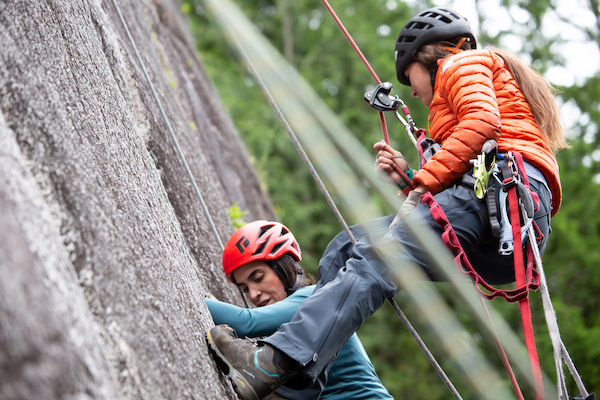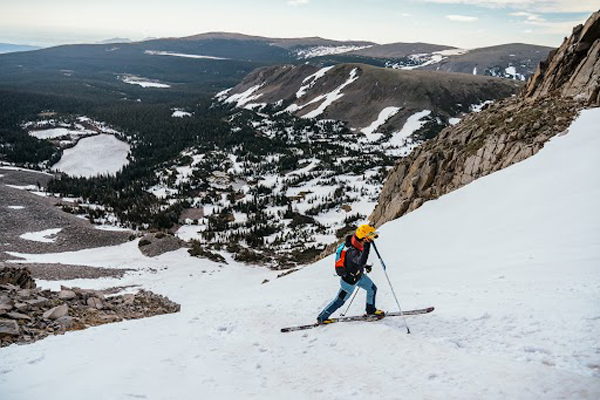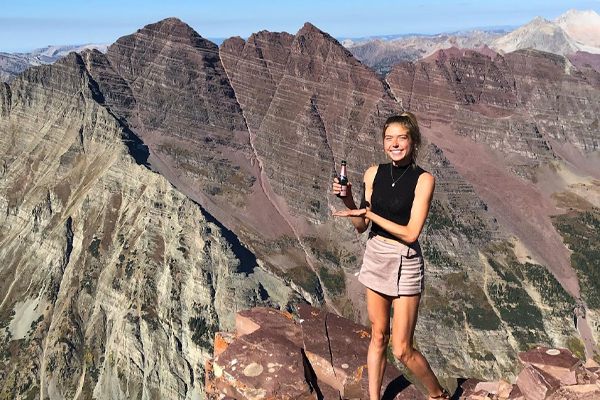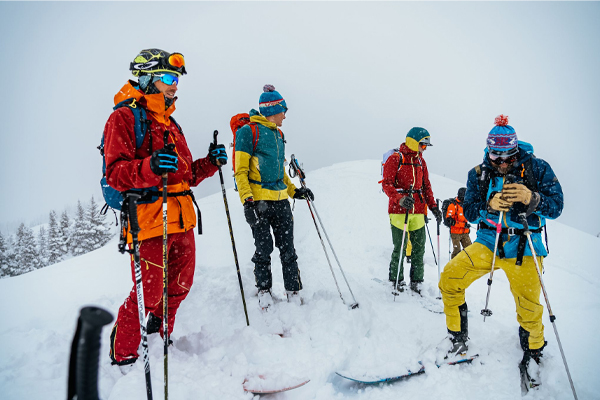What You Should Know Before Running the LT100
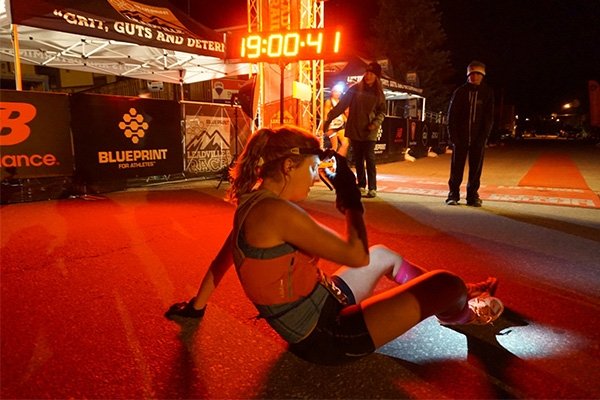
"The 100 had been on my mind because—why not?" Clare Gallagher gives advice for LT100 first-timers...
- - -
In August of 2016 I was 24 years old, newly jobless and wholly uncertain of what I wanted to do with my life. My one certainty was that I’d race the Leadville Trail 100 at the end of the month. I’d been running ultras for a whopping two years—a 50-miler in Thailand, a 50km in Cimarron, Colorado, the Leadville Marathon (basically an ultra, it’s so hard), the Dirty 30, and the Austin Rattler in April 2016 to qualify for the Leadville 100 that summer. The 100 had been on my mind because, well, why not? Growing up outside Denver in a family that lauded Type II fun, we’d often talked about that "crazy run near all those 14ers." It had always been in my periphery.
Then, after moving to Boulder in 2016, I befriended a bunch of trail runners, the Rocky Mountain Runners. So within my new peer group, Leadville seemed like the logical summer goal. Don’t mistake me though—I was far from experienced. The longest training run I did that summer leading up to Leadville was a 30-mile road run.
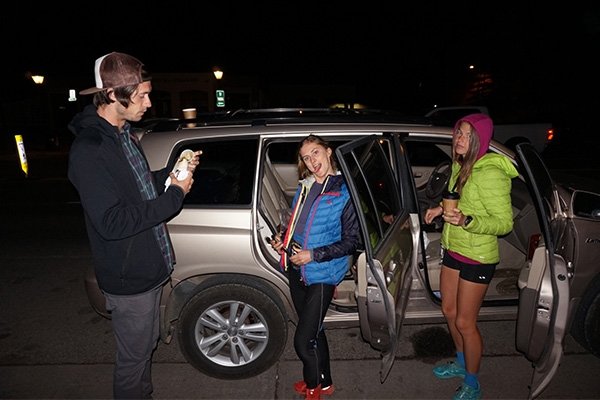
My main source of information on how to race Leadville came from my trail running mentor, Ryan Smith. Even though he’d never admit to providing valuable racing advice, that everyone should “basically suck it up and run,” Smith is a treasure-trove of knowledge when it comes to trail running and ultras. He’s finished 8th at UTMB, and crewed and paced Leadville at least five times, including one of Ian Sharman’s wins. Smith has spent so many hours on the course, his memories blend together. But all that collective experience has allowed him to simplify his advice. Even though his personal style is to inflict pain from the start gun, he’ll berate anyone else who goes out too fast. He witnesses this mistake practically every month of the year, following our fellow Boulder trail runners in the race scene. In short, Smith is a low-key sage of our sport.
Smith shared his invaluable Leadville beta with me over a few conversations on group runs in Boulder that summer:
“Hey Smith, what can you tell me about Leadville?”
“First, the race doesn’t start 'til after mile 60. Twin Lakes on the return end.”
“What?!”
Was he really saying that I’d have to run 50 miles, over Hope Pass, then another 10 miles back over Hope Pass before the race even started?
“What does that even mean?”
“It means, don’t do anything stupid in the first 60 miles. You should feel like you’re barely running. Everything happens in the last 40 miles.”
“Okay…”
“You have to take care of the little things, especially at the beginning. If you feel a hotspot on your foot, fix it. Immediately. If you feel low on fuel, eat more. If you feel tired, slow down. Listen to your pacers. You’ve got Cat over Hope Pass. Just listen to her." (Cat Bradley, like me, was a relatively unknown ultrarunner at the time, but she’d go on to win Western States in 2017. Paced by none other than Ryan Smith.)
“Okay…”
“And the race: don’t worry about anyone. They will all die in the second half. You cannot die in the second half. That is the race.”
“Okay…”
“And you must taper properly.”
“Right, so how much should I run the weeks leading up to Leadville?”
“Barely run at all. You need to rest.”
“So, like 20-miles the week of?”
"No! Like maybe a little shakeout on Tuesday and another the day before. You need to be ready. But, don’t forget to do some intensity the second week out. You don’t want to feel sluggish. You want your legs to feel fresh.”
“Is the whole race going to be super painful?”
“It shouldn’t be at the beginning. But then, yes. Once you come back over Hope Pass, mile 55-60, you should feel pretty crappy until the end. That’s when you have to push. This isn’t supposed to be easy after all. It’s bloody Leadville!”
“Is Leadville known for being super hard?”
“Leadville is known for being very runnable and very high. There are so many flat, fire road sections. You will run all of those.”
“Okay.”
“This isn’t supposed to be easy.”
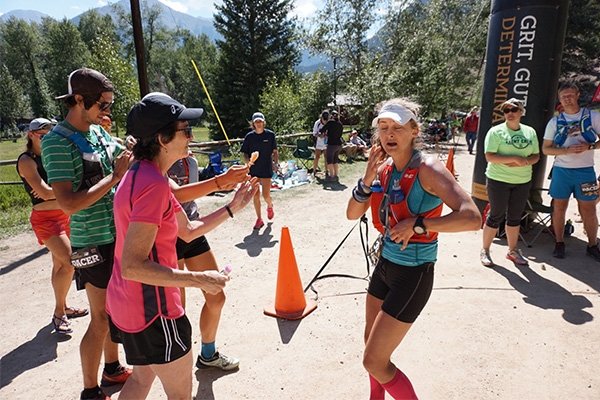
Aside from studying the course, making an A, B and C goal pace chart, and planning my crew’s driving directions and food for each aid station, Smith’s advice was pretty much all I knew going into Leadville.
"I was cursing Smith under my breath when I came into Winfield at mile 50. No way could I make it to mile 60, let alone mile 100. But then, just as Smith foresaw, I picked up my first pacer, Cat, and I just listened to her."
I took heed and didn’t let my heart rate rise until the last quarter of the race. When I felt like I was running too fast, I slowed. As the sun rose—I’d left the first aid station at May Queen (mile 14 or so) and entered the magical Colorado Trail section—I could feel my quads and calves straining ever so slightly as I tried to stay with a few men inching up the insidious climb. So, I slowed down. I let them go. I talked to myself and pretended I was a forest fairy. I ran a pace that I thought, “I could run this forever.” Lo and behold, I would catch every single one of these men by the end of the race.
I won’t pretend to say that I felt good halfway through. Actually, I was cursing Smith under my breath when I came into Winfield at mile 50. No way could I make it to mile 60, let alone mile 100. But then, just as Smith foresaw, I picked up my first pacer, Cat, and I just listened to her. We did not run back over Hope Pass. We hiked. She told me to slow my cool and to relax. My shoulders loosened up and we even happily chatted on the way down Hope Pass to Twin Lakes. Smith was right: trusting the people who are not racing 100-miles is an imperative way to conserve energy.
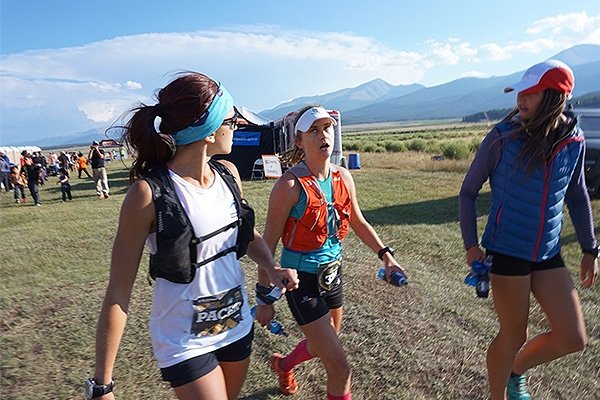
Above all: don’t overthink Leadville. In many ways, keeping the advice and beta parsed down to the simplest terms is the way to go. You won’t have your laptop during the race. You will only have what you’ve memorized and I think that should be as simple as possible. Leadville mustn’t be overcomplicated. It’s an out-and-back after all! It’s mainly runnable. It’s heavily aided. You will likely always have other runners in your sights.
You need to focus inwards: more about what your needs are, less about what Leadville is, or isn’t. Plan for a bad stomach. Plan for 30 blisters. Plan for a chafed butt crack. Plan for a broken hydration vest buckle. Plan for a broken pole (if you use poles). Plan for your crew to get lost and what you’ll ask for from experienced aid station volunteers. Most importantly, plan to finish.
It may not be easy, but it should be Type II fun if you remember to smile and to be grateful. You get to run one of the most famed 100-milers in the world, by choice. Bon voyage, crazies!
Photos: © Ryan Lassen
- - -
ABOUT THE AUTHOR
 CLARE GALLAGHER is a member of the La Sportiva Mountain Running® Team.
CLARE GALLAGHER is a member of the La Sportiva Mountain Running® Team.
- - -





